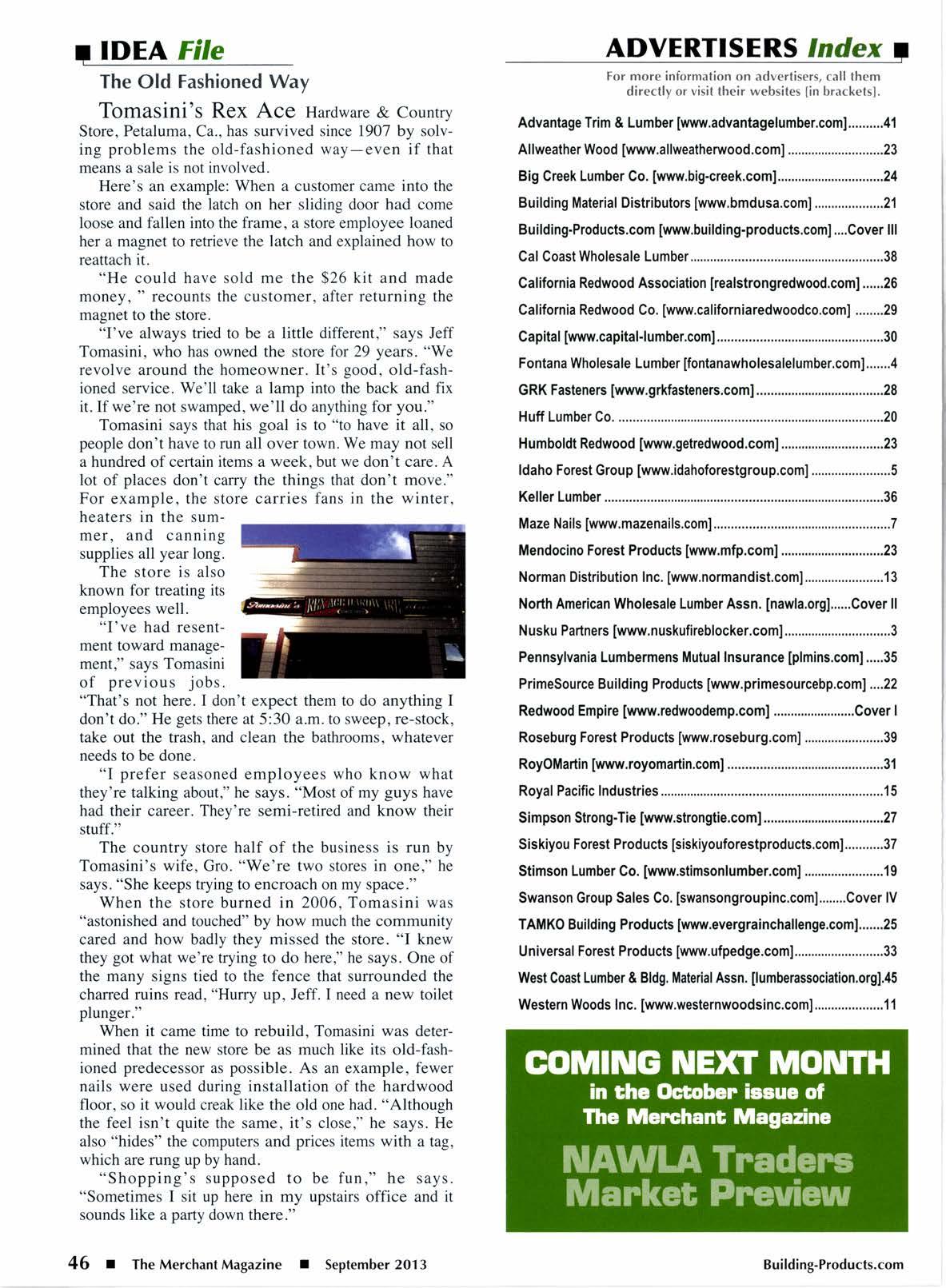
1 minute read
EPDs lssued for LVL, l-Joists
The American Wood Council and Canadian Wood Council have released two new environmental product declarations for LVL and wood Ijoists. Four others-for softwood lumber, softwood plywood, OSB, and glulam-were released in May.
EPDs are standardized tools that provide information about the environmental footprint of the products they cover. The North American wood products industry has taken its EPDs one step further by obtaining third-party verification from UL Environment. a business unit of Underwriters Laboratories and an independent product certifier.
According to AWC president and c.e.o. Robert Glowinski, "With the U.S. Green Building Council membership's recent approval of LEED v4 and its point recognition for disclosure and optimization of building product life-cycle impacts, the value of these six industry-wide EPDs in green building rating systems has taken a significant step forward. Additionally, the online version of the Green Globes building rating system also provides points for using prod- ucts that have third-party-verified EPDs. Clearly, there is a need to provide building teams with sciencebased information on environmental impacts of products and primary energy consumption so that more informed decisions are possible."
"The transparency provided in an EPD helps to pinpoint locations in the production and supply chain where wood products exhibit favorable environmental performance, as well as areas where lower impacts can be realized in the future." said Michael Giroux, CWC president. "This type of objective, science-based data will help demonstrate to the design community that the wood industry is committed to full disclosure and will mitigate any false stigmas which may have previously existed without scientific or justified proof."
Based on international standards. EPDs have worldwide applicability and include information about product environmental impacts such as use of resources, global warming potential , emissions to air, soil and water, and waste generatron.
Business purchasing decisions may soon require the kind of environmental information provided by EPDs to account for factors such as carbon footprint.
LandscapingltemsGrowing Again
U.S. demand for landscaping products is projected to grow 6.9Vo annually through 2017 to $6.5 billion, predicts the Freedonia Group. Improved construction activitY, particularly in the number of new housing completions from low 2012 base levels, will be the primary driver of growth. An acceleration in sales of existing homes, a rebound in office and commercial construction, and a drop in office vacancy rates will also support gains.
A key growth factor for landscaping products is the ongoing interest in developing outdoor living spaces for relaxation and entertaining.
We've been in the redwood lumber business for 67 years and our reputation as a reliable supplier of top-quality lumber is as strong now as it was then. We produce a wide range of grades and dimensions, custom cut timbers, pattern stock and fencing. Order full, mixed, or partial truckloads.










